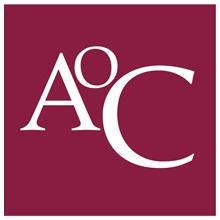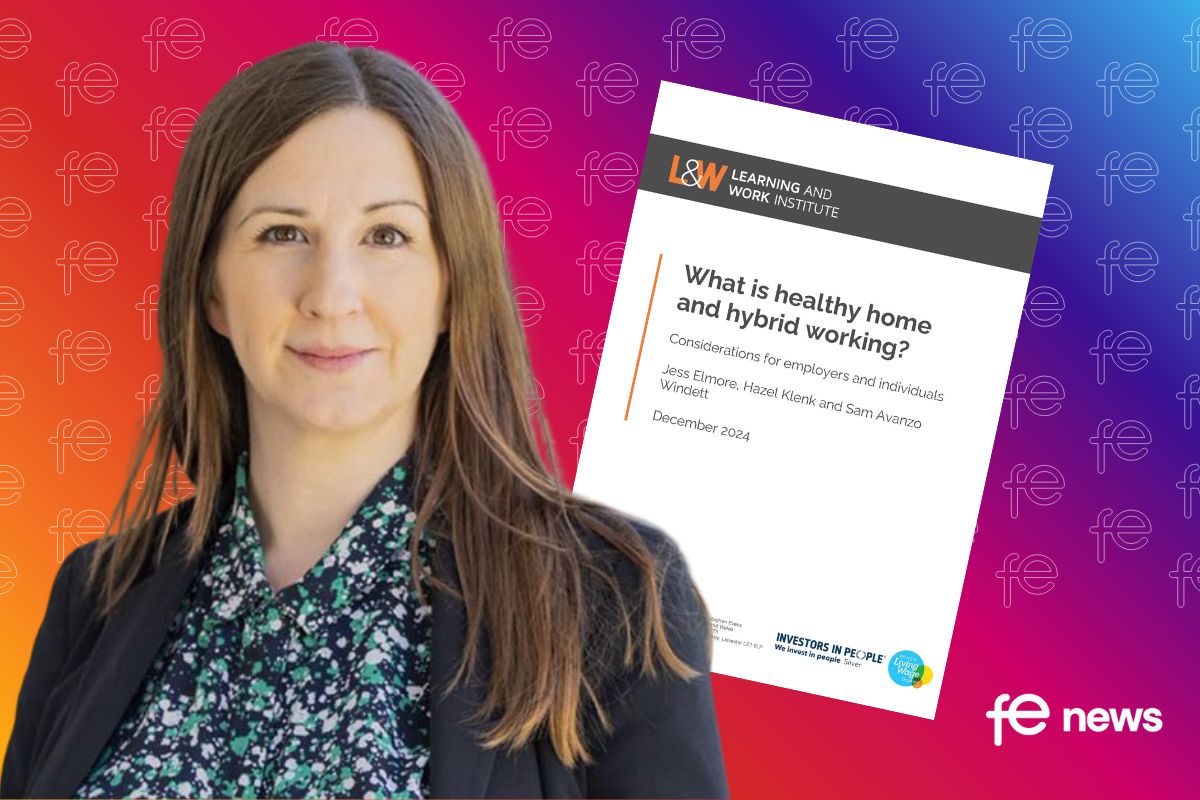GCSE results for England – Sector Response

As the first of the reformed GCSEs in English language, English literature and mathematics, are being issued, today’s (24 Aug) GCSE results show:
- Across English language, English literature and maths, there were 51,257 grade 9s awarded
- Entries in the reformed GCSE subjects of English language, English literature and maths all increased from last year
- There have been record entries into geography GCSEs this year
- Post-16 attainment for a standard pass in English has risen from 24.4% last year, to 31.1% in England
- Attainment in modern foreign languages remains broadly stable, including French, German and Spanish
- More pupils appear to be taking their maths GCSEs at a time that is right for them as early entries in maths reduced by 64.6%, but the number of entries gaining a grade 9 is at 13.3%, compared to 3.5% overall
Sector Response
 Kirsti Lord, Deputy Chief Executive (Member Services) of the Association of Colleges, said:
Kirsti Lord, Deputy Chief Executive (Member Services) of the Association of Colleges, said:
Today’s GCSE results see the first new style of 9-1 grading in English and maths, which will take some time for everyone to get used to.
English and maths is a challenge for colleges. That’s why the 6% in English pass rate increase for those aged 17 and over is welcome news. It is disappointing that this trend didn’t continue with maths, which has seen a 3% decrease.
Colleges will continue to face the English and maths challenge while the Government insists on 16 to 18-year-old students who haven’t achieved a grade C/4 at GCSE resitting the exam. After four years of putting students through GCSE resits, colleges can confirm that the policy does not work and is an obstacle to the ambition that we all share.
The Government and educators must work together to deliver the right form of study which benefits students and sets them up with the right skills and knowledge to help in their chosen career.”
 Dr Mary Bousted, general secretary of the Association of Teachers and Lecturers (ATL), said:
Dr Mary Bousted, general secretary of the Association of Teachers and Lecturers (ATL), said:
Congratulations to students and their teachers for all the hard work they have put into achieving their GCSE results this year, despite the chaos created by the rushed in reforms.
This year it has been impossible for teachers to predict their students’ results because of lack of certainty in the new 9-1 grade boundaries. We are already hearing that students who had expected to receive a 9 (A* equivalent) have been disappointed as they have received a 7 or 8. As well as impacting students individually, this could lead to a substantial increase in requests for papers to be re-marked.
We suspect that the fall in A*-C grades (equivalent to grades 9-4) reflects the impact of the Government’s ill-thought-out policy to push all students to do the English Baccalaureate (EBacc) subjects. The EBacc has absolutely decimated the opportunity for students to choose subjects that could enable them to succeed and is denying them access to a wide range of vocational courses that they would be better suited to. And although entries in EBacc subjects at GCSE increased overall by 9%, the number of non-EBacc subject entries, eg. art and design, design and technology, engineering and drama, continues to fall, this year by 7.7%. This is a substantial narrowing of the curriculum and is already having a serious impact on the learning and career options open to students.
 Angela Middleton, Chairman and Founder of apprenticeships and training consultancy MiddletonMurray, said:
Angela Middleton, Chairman and Founder of apprenticeships and training consultancy MiddletonMurray, said:
I’m in favour of the new GCSE grading system as it will drive up academic standards in the country, ensuring we remain global leaders. It also clearly paves the way for a differentiation between higher education and vocational routes for 16 year olds. The new grades may initially confuse employers as they do not fully reflect the previous A* – C pass rate, but ultimately these teething issues will pass.
Alongside the new system, apprenticeships are being recognised as an equally beneficial route for progressing your education and career. The grading changes indicate an increased awareness that academia is not for everyone and there are more options available for young people than ever before.
 Elliot Gowans, VP EMEA of global learning technology leader, D2L, said:
Elliot Gowans, VP EMEA of global learning technology leader, D2L, said:
As GCSE results follow hot on the heels of this year’s A-Level announcements, the education industry is once again under the spotlight. Indeed, student performance is a reflection not just on an individual’s abilities, but also on the school, teachers and education sector as a whole. It’s fair to say that education has evolved significantly over the last decade, and as we analyse student success rates it’s important to look at how these changes are impacting the learning experience and what can be done to maintain or indeed improve upon these successes year on year.
Take technology, for example. Over the last few years we have started to witness how technology can transform how, when and where students learn. The traditional way of learning, which has often involved one teacher instructing 30 students with the same materials and at the same pace, is archaic. Modern-day students are being brought up in a hyper-connected social world where everything they want is at the click of a mouse or the opening of an app – and this is transitioning into the classroom.
Advances in education technology means schools and colleges can now offer a much more personalised, blended learning experience that will engage with young people who increasingly expect tailored, on-demand and mobile learning. Tools such as video, social and gamification are being introduced to the classroom, adding a level of flexibility that was previously unattainable. Furthermore, adaptive learning models mean they now have the ability to cater to every student’s personal skillset or time requirements, which not only help students improve exam results, but paves the ways for stronger retention – an issue that has recently sparked concern following stories that university drop-out rates are increasing.
Technology is undoubtedly important in determining today’s student success rates, and as we enter a new school year, it’s likely we will see it play an even greater role in helping shape students’ education.”
 School Standards Minister, Nick Gibb, said:
School Standards Minister, Nick Gibb, said:
Today, hundreds of thousands of 16-year-olds find out the results of 2 years or more of hard work and study. They will now move onto the next phase of their education well equipped for what lies ahead and I would like to thank their teachers whose dedication and hard work has helped them achieve success.
The government’s new gold-standard GCSEs in English and maths have been benchmarked against the best in the world, raising academic standards for pupils. These reforms represent another step in our drive to raise standards, so that pupils have the knowledge and skills they need to compete in a global workplace.
The fruits of these reforms will be seen in the years to come, but already pupils and teachers are rising to the challenge with more than 50,000 top 9 grades awarded across the new GCSEs and more than two thirds of entries sitting the tougher English and maths exams securing a grade 4 or C and above – a standard pass.
As we saw with last week’s new A-levels, we are beginning to see our reforms translating into higher standards, improving opportunities and the life chances of millions of young people and helping to fulfil the voracious demand for knowledgeable and skilled young people from Britain’s dynamic and growing economy.
 Layla Moran MP, said:
Layla Moran MP, said:
Image courtesy of the Liberal Democrats
“I hope students and their families have every reason to celebrate today.
Students, teachers and schools should be given huge credit for making the best of a very challenging situation. Students only get one go at education, so it is not good enough for a whole cohort to be used as guinea pigs in this way. These changes were brought in far too quickly and without adequate investment.
This is why the Liberal Democrats have called for the curriculum to be taken out of the hands of politicians and instead managed by an arms length body that works with examining boards and teachers to ensure these major changes are properly resourced and thought through. “
 Jack Parsons, CEO of yourfeed, the online platform connecting young people to employment opportunities with brands, said:
Jack Parsons, CEO of yourfeed, the online platform connecting young people to employment opportunities with brands, said:GCSEs are an important gateway to future opportunities. Be that Further Education, apprenticeships or employment. However, the new rankings being trialled this year will make results more unpredictable. Making them not entirely reflective of a student’s ability.
Employers must now place equal emphasis on young people’s skills and ambition when making hiring decisions. Providing opportunities for young people to grow and develop on the job. Instead of just looking at these new numbers on the CV.”
This summer is the first award of the new grade 9 in the reformed GCSE English language, English literature and mathematics specifications. Grade 9 is not the same as A: it is a new grade, designed to recognise the very highest performing students, so there are fewer grade 9s than there were As.
In the first year grade 9 will be calculated arithmetically. These changes reflect the government’s intention that the qualifications better prepare students for further study and work, are more stretching for the most able students and remain accessible to the range of students who have traditionally taken GCSEs.
The new GCSEs are being phased in. By 2020 all GCSEs taken in England will be in line with this policy and be graded 9 to 1. (The policy steer was set out in a letter from the Secretary of State to Ofqual in February 2013).
Setting standards in GCSEs in 2017
The qualifications were designed in line with the Government’s policy for the qualifications and therefore:
- have more demanding subject content than the qualifications they replace
- are accessible, with good teaching, to the same proportion of students that currently sit GCSE examinations at the end of key stage 4
- all the assessments are taken at the end of the course and, for these 3 subjects, all assessment is by examination
- use tiered examination papers only where it is necessary: so English language and English literature GCSEs are not tiered and GCSE mathematics is tiered
Ofqual have set out their approach to setting standards in GCSEs this summer in their monitoring report. In the 2017 awards, exam boards used predictions based on students’ prior attainment at key stage 2 to inform the setting of grade boundaries.
And, as in previous years, senior examiners have been involved in all awards. In the reformed GCSEs they were asked to check whether the student work at the grade boundaries suggested by the statistics was at an acceptable standard for the grade (either 7, 4 or 1). Ofqual have not intervened to ask any boards to change their grade boundaries this summer.
For the reformed GCSEs ofqual published a blog that estimated the likely proportions of 16-year-old students that would achieve each grade in GCSE English language and mathematics, including grade 9, in England (a technical explanation of the modelling is also available). As with any modelling, their figures were based on a number of assumptions, so these were only estimates. However, their modelling is broadly similar to the proportion of 16-year-old students in England achieving each grade this summer. Ofqual said in their blog that they could be more confident in the estimates at grades 7, 4 and 1, since the bottom of these grades were set to align with the bottom of grades A, C and G in the previous A* to G grade structure. The modelling shows that the estimates are very close to the actual outcomes at these grades.
Grade 9 in reformed GCSE subjects
Last year ofqual announced the detail of how grade 9 will work, known as the ‘tailored approach’. This approach will mean that across all subjects (when all GCSEs are graded 9 to 1) about 20% of those students achieving grade 7 or above will achieve a grade 9. Ofqual adopted this approach in order to be fair across all subjects, including those where there are relatively high proportions of students currently achieving A* and A. Ofqual have provided more details of the approach to setting grade 9 on their blog.
In the first year each specification is awarded, grade 9 is calculated arithmetically, using the formula shown below for 16 year old students that are matched to their prior attainment at key stage 2. These are the students that are included in the statistical predictions that are used to guide awarding. This means that the percentage of all students achieving a grade 9, relative to the percentage achieving a grade 7, will not necessarily correspond to the formula.
Percentage of those achieving at least a grade 7 who will be awarded a grade 9 = 7% + 0.5 × (percentage of students awarded grade 7 and above)
Grade boundaries
It is always difficult to compare in a meaningful way grade boundaries between old and new qualifications. Maximum marks for the papers, the number of papers in a subject and the type of assessment can all be different. Where some of the old qualifications had coursework, grade boundaries on written papers may have been higher to compensate for high marks on the coursework.
Comparing the previous GCSE qualifications with the reformed qualifications is particularly challenging for a number of reasons.
The reformed GCSE English language and English literature qualifications are no longer tiered. The new papers are very different from the legacy papers since they are targeted at the full range of ability.
In mathematics, the mark allocations and the grades covered by the tiered papers have changed. When producing their question papers, exam boards are required to take all reasonable steps to ensure that the targeting of marks to grades complies with their subject level conditions. However, it is not possible to accurately predict the difficulty of a question before it has been sat by students. This means that a question targeted at a particular grade might perform at a lower or higher grade than intended, which will influence the position of the grade boundaries. Their sawtooth research also suggests that, on average, grade boundaries will increase over the first few years of a specification.
GCSE English language
More 16-year-olds took GCSEs in English language this summer following changes to school performance tables. To provide a meaningful comparison of results for 16-year-olds, they have therefore combined GCSE and international GCSE data from summer 2016 to compare with GCSE data this year.
The following table shows the cumulative percentage outcomes for 16-year-olds in England in summer 2016 and summer 2017, comparing grades C/4, and grades A/7 (all of the GCSE and international GCSE combined figures in this guide are based on data provided to Ofqual by exam boards a week before results day. While the data is not complete, any missing data is likely to be missing at random). This shows that overall results for 16-year-old students in English language have remained stable in summer 2017 when compared to summer 2016, particularly at grade C/4.
|
Cumulative percentage at grade |
2016 |
2017 |
|
A or 7 |
16.2 |
16.8 |
|
C or 4 |
69.7 |
69.9 |
GCSE English language spoken language endorsement
Performance in spoken language is reported separately and in the reformed GCSE qualifications is graded as pass, merit, or distinction. Students not achieving a grade are not classified. For the spoken language endorsement students do a prepared spoken presentation on a specific topic.
The table below shows the percentage of students achieving each endorsement grade, broken down by the grade for their performance in their examinations (these figures are based on data provided to Ofqual by exam boards a week before results day. While the data is not complete, any missing data is likely to be missing at random). It is not surprising that students achieving higher grades for their examination performance tend to perform better in the spoken language assessment too.
|
Grade |
Distinction |
Merit |
Pass |
Not classified |
Total |
|
9 |
76.2 |
20.8 |
2.5 |
0.4 |
13,988 |
|
8 |
63 |
31.5 |
5.1 |
0.4 |
28,083 |
|
7 |
49.6 |
40.5 |
9.4 |
0.6 |
49,267 |
|
6 |
34.6 |
47.4 |
17.2 |
0.8 |
92,418 |
|
5 |
20.9 |
48.1 |
29.4 |
1.6 |
116,375 |
|
4 |
11.5 |
42.2 |
43.2 |
3.1 |
106,417 |
|
3 |
5.6 |
29.9 |
58.5 |
6.1 |
136,224 |
|
2 |
2.4 |
16.8 |
69.3 |
11.6 |
55,943 |
|
1 |
1.4 |
10.6 |
67.2 |
20.8 |
21,010 |
|
U |
1.2 |
7.6 |
58.1 |
33.1 |
6,623 |
|
Total |
20.9 |
36.6 |
38.1 |
4.4 |
626,348 |
GCSE English literature
The 16-year-old cohort has increased this summer compared to last summer. More students are taking GCSE qualifications in English literature instead of international GCSEs, following changes to school performance tables. The reformed English literature GCSE is also now the main route to gain a qualification containing literature (previously students could take GCSE English which incorporated both language and literature). This, coupled with the way in which Progress 8 performance measures are now calculated, has contributed to the increased uptake of English literature. These changes to the cohort will have had an impact on the overall outcomes.
To provide a comparison of results for 16-year-olds ofqual have combined GCSE and international GCSE data from summer 2016 to compare with GCSE data this year. The following table shows the cumulative percentage outcomes for 16-year-olds in England in summer 2016 and summer 2017, comparing grades C/4, and grades A/7. This shows that overall results for 16-year-old students in English literature have remained stable at grade C/4. The lower outcomes at grade A/7 this year are likely to be as a result of the cohort changes this summer.
|
Cumulative percentage at grade |
2016 |
2017 |
|
A or 7 |
21.7 |
19.1 |
|
C or 4 |
72.5 |
72.5 |
The increased uptake in English literature is as a result of new schools and colleges entering students to GCSE English literature, and existing schools and colleges, on average, entering more students this summer compared to last summer. This is shown in the table below.
|
Year |
Mean number of entries per centre |
Number of centres |
|
2016 |
120.0 |
3065 |
|
2017 |
131.2 |
3965 |
GCSE mathematics
Like the legacy qualifications, the reformed GCSE mathematics qualifications use a two-tier assessment model. However, there are differences in the content and demand of both the higher and foundation tiers. The balance of entries between tiers has therefore changed. This is shown in the table below, that shows the percentage of 16-year-old students in England sitting the foundation and higher of the reformed qualifications this summer, compared to the linear qualifications in summer 2016.
|
Tier |
2016 |
2017 |
|
Foundation |
24% |
47% |
|
Higher |
76% |
53% |
Following changes to performance tables there has also been a small increase in the number of 16-year-olds taking GCSEs in mathematics rather than international GCSEs. To provide a comparison of results for 16-year-olds ofqual have combined GCSE and international GCSE data from summer 2016 to compare with GCSE data this year. The following table shows the cumulative percentage outcomes for 16-year-olds in England in summer 2016 and summer 2017, comparing grades C/4, and grades A/7. This shows that overall results for 16-year-old students in mathematics have remained stable at grades A/7 and C/4.
|
Cumulative percentage at grade |
2016 |
2017 |
|
A or 7 |
19.7 |
19.9 |
|
C or 4 |
69.9 |
70.7 |
Post-16 outcomes in English language and mathematics
There has been an increase in post-16 entries for GCSE English language and mathematics qualifications this summer (from 116,821 to 135,881 in English language, and from 160,783 to 167,541 in mathematics). The table below shows the cumulative percentage outcomes for 17-year-olds, 18-year-olds, and students aged 19+ for English language and mathematics. These figures combine the outcomes for post-16 students taking the legacy and reformed qualifications this year, and compare these to outcomes for post-16 students taking the legacy qualifications in summer 2016.
|
Subject |
Age |
A/7 2016 |
A/7 2017 |
C/4 2016 |
C/4 2017 |
|
English |
17-year-olds |
0.8 |
1.1 |
21.9 |
29.1 |
|
English |
18-year-olds |
0.2 |
0.3 |
16.9 |
24.6 |
|
English |
19+ |
1.9 |
2.7 |
33.1 |
39.4 |
|
Maths |
17-year-olds |
1.9 |
1.5 |
26.4 |
24.6 |
|
Maths |
18-year-olds |
0.6 |
0.4 |
18.0 |
16.5 |
|
Maths |
19+ |
3.2 |
2.4 |
39.3 |
33.9 |
GCSE (combined) science
Overall entries for GCSE (combined) science have decreased this summer when compared to summer 2016 (from 375,654 to 283,390). In general, students take GCSE science in year 10 and GCSE additional science in year 11. This year the entry from year 10 students is lower, because these students are waiting to take the reformed GCSE science qualifications that are available in summer 2018.
The change in entry has an impact on the overall results. In the past, year 10 students generally out-performed the year 11 students at grades A* to C. This year, although the results for 16-year-olds have remained stable, the overall outcomes are lower because the year 10 cohort has changed. This is shown in the table below for England.
|
Cumulative percentage at A* to C |
2016 |
2017 |
|
Year 10 and under |
63.6 |
35.8 |
|
Year 11 |
47.6 |
48.0 |
|
Overall |
52.7 |
47.9 |











Responses